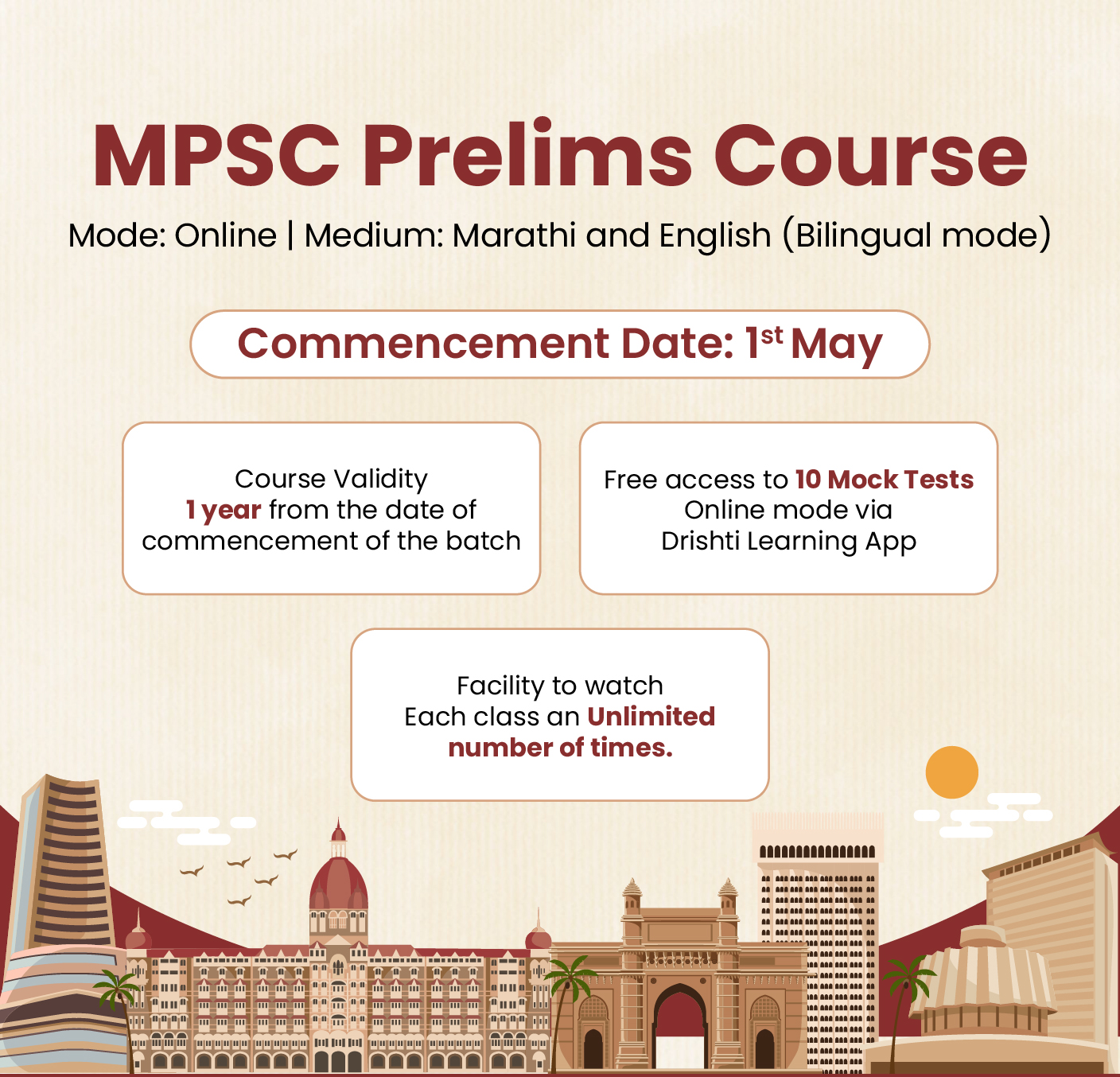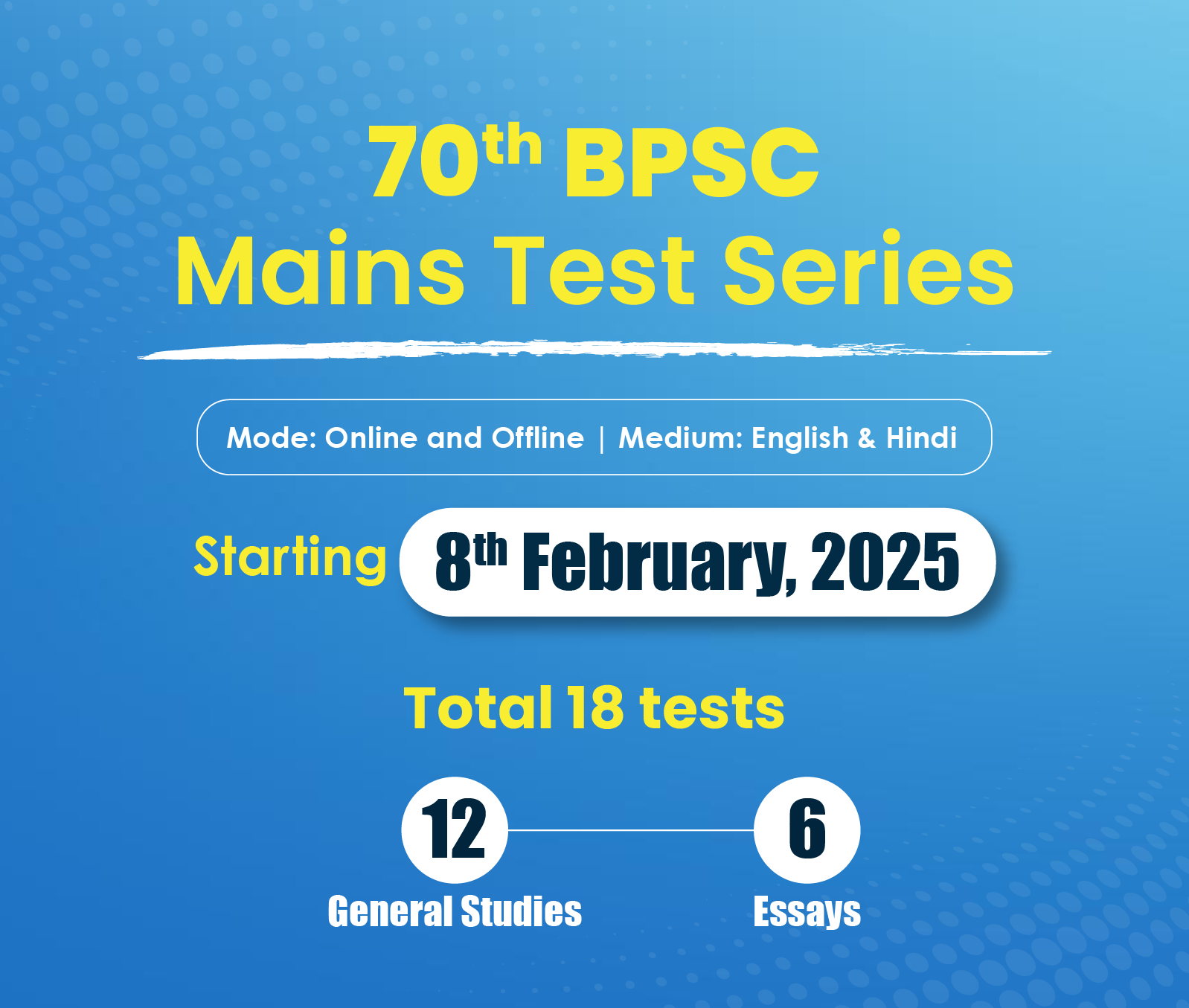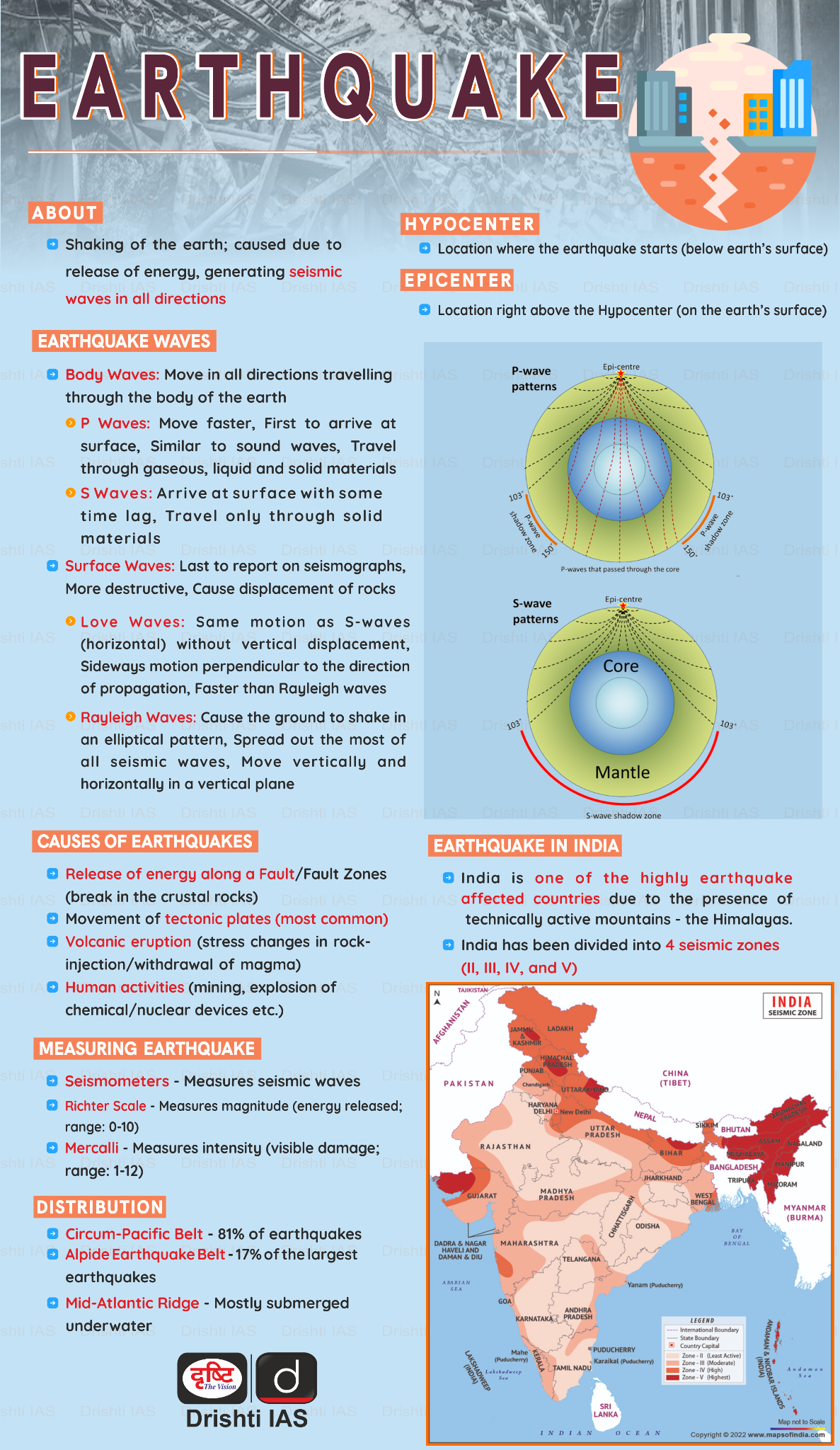Rajasthan Switch to Hindi
Earthquake Tremors in Rajasthan
Why in News?
Recently the residents of Barmer, Rajasthan, experienced mild earthquake tremors.
- The tremors led to a brief period of panic, with people vacating buildings and gathering in open spaces.
Key Points
- Location: Barmer, Rajasthan
- Magnitude: 3.5 on the Richter scale
- Structural Damage: No major structural damage has been reported. Some minor cracks in buildings were observed.
- Emergency Response: Local authorities quickly responded, ensuring that emergency protocols were followed. They have advised residents to stay alert and follow safety guidelines in case of aftershocks.
- Seismic Waves: Seismic waves are the vibrations from earthquakes that travel through the Earth and are recorded on instruments called seismographs.
- Seismographs record a zigzag trace that shows the varying amplitude of ground oscillations beneath the instrument.
- Richter Scale and Mercalli Scale: The earthquake events are scaled either according to the magnitude or intensity of the shock.
- The magnitude scale is known as the Richter scale. The magnitude relates to the energy released during the earthquake which is expressed in absolute numbers, 0-10.
- The intensity scale or Mercalli scale takes into account the visible damage caused by the event. The range of intensity scale is from 1-12.
Seismic Zones in India
- There are four seismic zones (II, III, IV, and V) in India based on scientific inputs relating to seismicity, earthquakes that occurred in the past and tectonic setup of the region.
- Previously, earthquake zones were divided into five zones with respect to the severity of the earthquakes but the Bureau of Indian Standards (BIS) grouped the country into four seismic zones by unifying the first two zones.
- BIS is the official agency for publishing the seismic hazard maps and codes.
- Seismic Zone II:
- Area with minor damage earthquakes corresponding to intensities V to VI of MM scale (MM-Modified Mercalli Intensity scale).
- Seismic Zone III:
- Moderate damage corresponding to intensity VII of MM scale.
- Seismic Zone IV:
- Major damage corresponding to intensity VII and higher of MM scale.
- Seismic Zone V:
- The area around major fault systems is where seismic activity is concentrated, making it the most earthquake-prone region.
- Earthquake zone V is the most vulnerable to earthquakes, where historically some of the country’s most powerful shocks have occurred.
- Earthquakes with magnitudes in excess of 7.0 have occured in these areas, and have had intensities higher than 9.








%20MPPCS%202025%20Desktop%20E.jpg)
%20MPPCS%202025%20Mobile%20E%20(1).jpg)










.png)
.png)











 PCS Parikshan
PCS Parikshan


